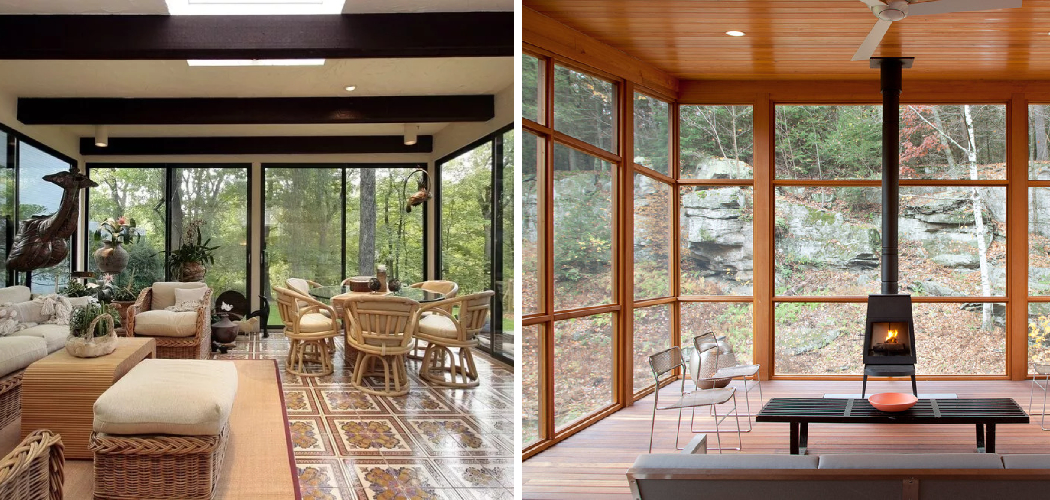Insulating your sunroom ceiling allows you to control the temperature in the space, making it more comfortable year-round. It also can reduce energy costs by keeping cool air in the summer and warm air in the winter. Additionally, insulating your sunroom ceiling will help create a quieter atmosphere since sound travels through the air.
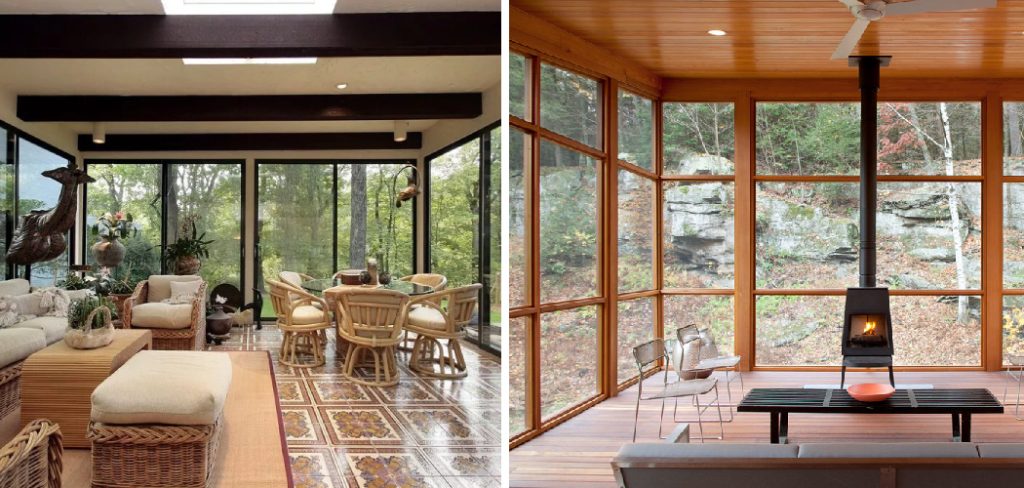
The advantages of insulating a sunroom ceiling are numerous. Insulating the ceiling can help to reduce energy costs by keeping the space cooler in summer and warmer in winter. It also reduces noise transfer from outside, which can be especially helpful if you’re located near a busy street or other noisy area. In this blog post, You will learn in detail how to insulate sunroom ceiling.
Step by Step Processes for How to Insulate Sunroom Ceiling
Step 1: Inspect and Clean the Area
Before insulating any sunroom ceiling, it is important to inspect and clean the area. Ensure no cracks or holes in the walls/ceiling may need attention before insulation. Any debris should also be removed from the space before beginning the project.
Step 2: Measure the Area
Measure the area of your sunroom ceiling that needs insulating. This will help to determine how much insulation materials you need to purchase. Shop around for the best deals for the type and amount of insulation material needed for your sunroom ceiling project.
Step 3: Apply Adhesive Spray
Once you select an appropriate adhesive spray, spray it onto the ceiling to secure the insulation material. Once the adhesive is dry, lay your insulation material across the sunroom ceiling. Ensure each piece overlaps slightly with its neighboring pieces and that all uncovered areas are covered.
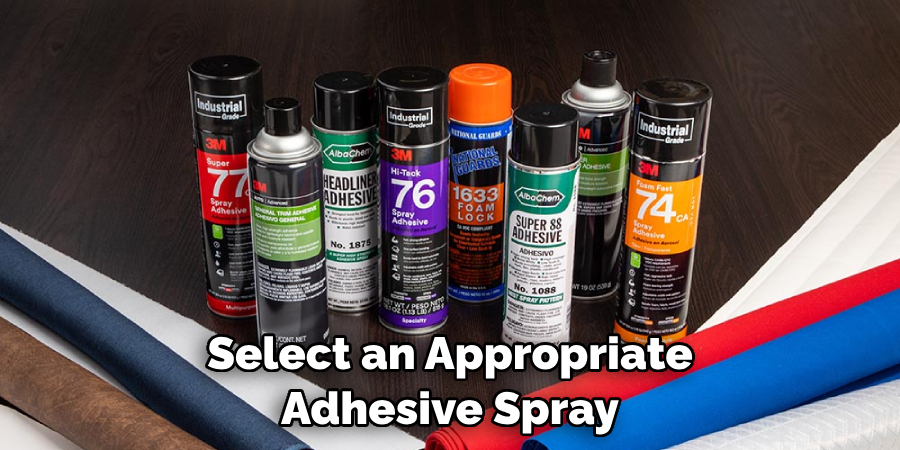
Step 4: Secure Insulation Material to the Ceiling
Secure the insulation material in place using a staple gun by stapling it to the ceiling. Make sure you are evenly spacing each staple for optimal results. Use a utility knife to cut any excess insulation material hanging off the edges of your sunroom ceiling.
Step 5: Seal Seams and Adhesive Spray Areas
Once all insulation material is in place, use a sealant to go over the seams and any areas where you applied the adhesive spray. This will help to keep your sunroom ceiling properly insulated. Install vapor barrier tape to the edges of the insulation material. This will help keep air and moisture from entering your sunroom ceiling, resulting in a more effective insulation installation.
Step 6: Inspect Area for Good Measure
Once you’ve completed all of the necessary steps above, inspect the area one last time for good measure. Ensure no cracks, holes, or spaces are visible and that all insulation material is secure.
By following these steps, you can effectively insulate your sunroom ceiling quickly. Be sure to consult a professional with any questions or concerns about the process. With careful planning and execution, your sunroom ceiling will be insulated properly and efficiently.
Tips for How to Insulate Sunroom Ceiling
- Wear protective gear, including safety glasses, gloves, and dust masks, when cutting insulation boards or blowing in fiberglass or cellulose insulation.
- Ensure the sunroom has adequate ventilation to prevent mold buildup due to condensation from the cold outside air touching warm interior surfaces. This can be accomplished by installing roof or gable vents that can be opened to provide air exchange.
- Use caution with the insulation materials you choose, as some types, such as foam, are combustible and must be treated with fire retardants for safety.
- Ensure all sunroom lights are approved for use in an insulated area or protected from contact with insulation.
- Check for any gaps or cracks that need to be sealed, as these can diminish the effectiveness of your insulation and provide a place for air to escape or enter the enclosed space.
- Any outlets or pipes that penetrate the insulated area should be sealed with foam gaskets to prevent air from entering through them.
- Lastly, ensure that the sunroom is well-ventilated for safety and comfort. This can be done by leaving windows or skylights open when in use or installing a fan to keep air circulating properly.
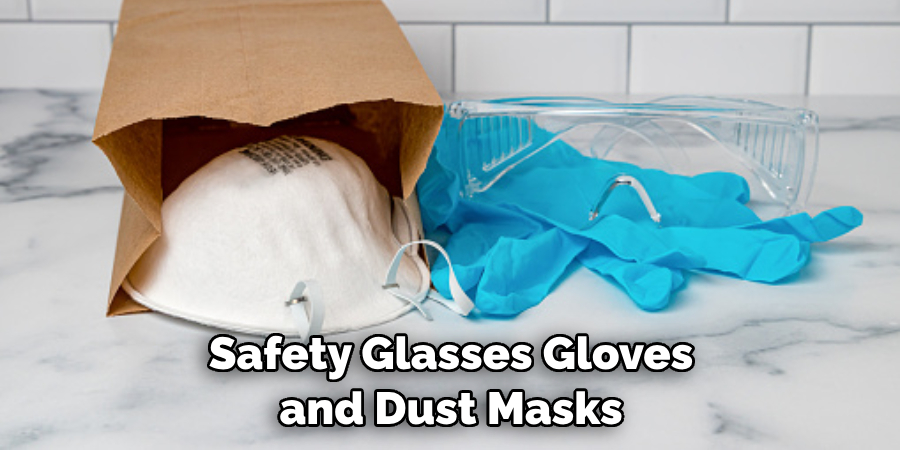
Following these tips will give you an insulated sunroom with a comfortable temperature and increased energy savings.
Are There Any Special Considerations for Installing Insulation in a Sunroom Ceiling?
When insulating a sunroom ceiling, certain considerations must be taken into account. Firstly, the type of insulation being used should be suitable for use in an enclosed space with direct sunlight.
Certain materials, such as foam board or fiberglass batts, may not be effective in this environment because they can become overheated and degrade over time. It is important to use insulation materials that are designed for direct sunlight exposure, such as reflective systems or radiant barriers.
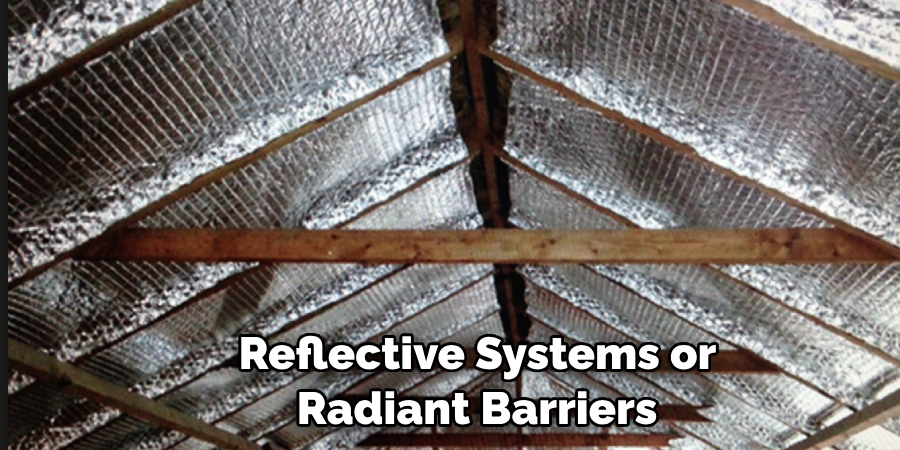
Secondly, since sunroom ceilings are exposed to the elements, they can experience higher heat and moisture levels than other home areas.
This means that it is essential to install a vapor barrier along with the insulation to prevent moisture from entering and accumulating in the insulation material. Additionally, it is important to choose an insulation material that is resistant to mold and mildew growth, as these can be common issues in sunrooms.
Will Installing Insulation in Your Sunroom Ceiling Help Protect Against Moisture Damage?
Having a sunroom in your home is often seen as an ideal way to get extra living space, but if you don’t properly insulate the room’s ceiling, it can quickly become a nightmare. Too much heat and moisture can lead to serious damage from mildew and other forms of rot. While insulation won’t solve all of your issues, it can go a long way in helping to keep them at bay.
Installing insulation in the ceiling of your sunroom can help reduce moisture buildup that can lead to mold and mildew growth. Insulation provides an airtight seal, which prevents warm, moist air from entering the room and condensing on cooler surfaces, such as the ceiling. Installing insulation can also help reduce heat conduction, making your sunroom more comfortable all year round.
How Much Insulation Do You Need for Your Sunroom Ceiling?
When insulating your sunroom ceiling, you need to consider both the size of the room and its climate. For instance, if you live in a cold climate with long winters, then you may need more insulation than someone living in a milder climate.
Generally speaking, an R-value of 30 is recommended for ceiling insulation in sunrooms. R-values measure the thermal resistance of a material, and the higher the number, the more effective it is at keeping out cold air.
You should choose insulation with good moisture resistance when insulating a sunroom ceiling. Open cell foam spray insulation is one such option, as it is designed to repel water and maintain its R-value. You should also make sure to use a vapor barrier to protect the insulation from moisture damage.
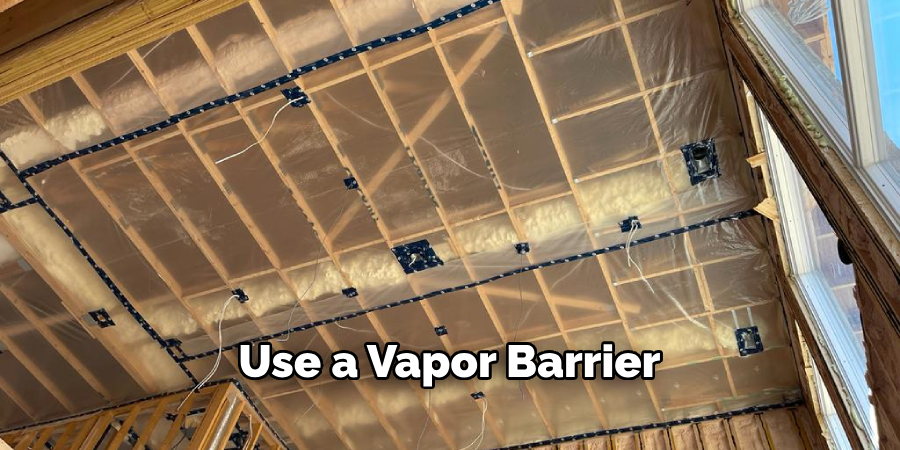
Once you’ve decided on your insulation, it’s important to ensure that it is fitted properly. Each piece of insulation should be snugly placed against the ceiling and walls without any gaps left exposed.
Is It Possible to Install Insulation in a Sunroom Ceiling Without Professional Help?
The answer is yes, but it requires some skill and knowledge of basic construction techniques. Depending on the type of insulation you choose to install, the job may require more time and patience than expected. If you are unsure of your DIY abilities or if the job looks too complicated, it’s best to consult with a professional contractor who can ensure that the job is done correctly and safely.
Before beginning, it’s important to assess the existing structure of your sunroom ceiling. You should ensure no holes, cracks, or other issues that may interfere with a successful insulation job.
Also, you’ll need to determine what type of insulation will work best in your specific situation; some materials may be better suited than others for a particular job. Once the space is prepped and the insulation is chosen, it’s time to start the installation process. If possible, enlist the help of a friend or family member who is familiar with construction projects.
How Long Does It Typically Take to Insulate a Sunroom Ceiling?
Insulating a sunroom ceiling can vary greatly depending on the size of the room, the type of insulation used, and the complexity of the installation. For instance, if spray foam insulation is used to insulate a large sunroom ceiling, it may take several hours or even days to complete. On the other hand, installing batt insulation in a small sunroom ceiling can be done in only a few hours.
Regardless of the size of your sunroom, hiring a professional contractor with experience working with insulation is important to ensure the job is done correctly and safely. Additionally, if you are using spray foam insulation, remember that special safety precautions must be taken during installation. It is always best to hire a professional for these types of installations.
Conclusion
In conclusion, insulating a sunroom ceiling can be a great way to help reduce energy costs and keep your room comfortable all year round. Researching the type of insulation best suited for your climate and home size is important.
Additionally, you will need to consider the potential cost savings and potential safety hazards when considering how to insulate your sunroom ceiling. With the right materials and techniques, you can enjoy a comfortable sunroom for many years. I hope this article has been beneficial for learning how to insulate sunroom ceiling. Make Sure the precautionary measures are followed chronologically.
